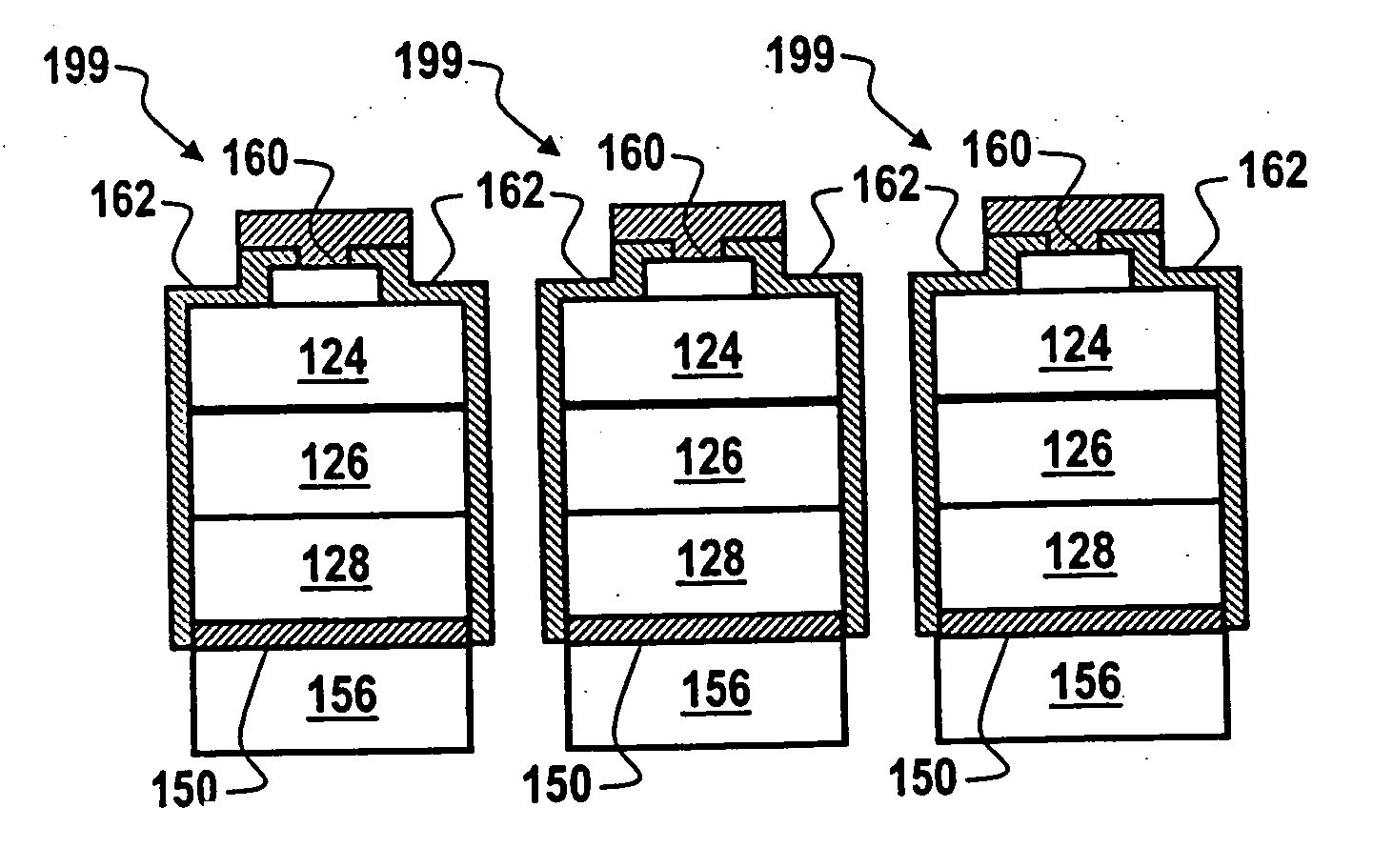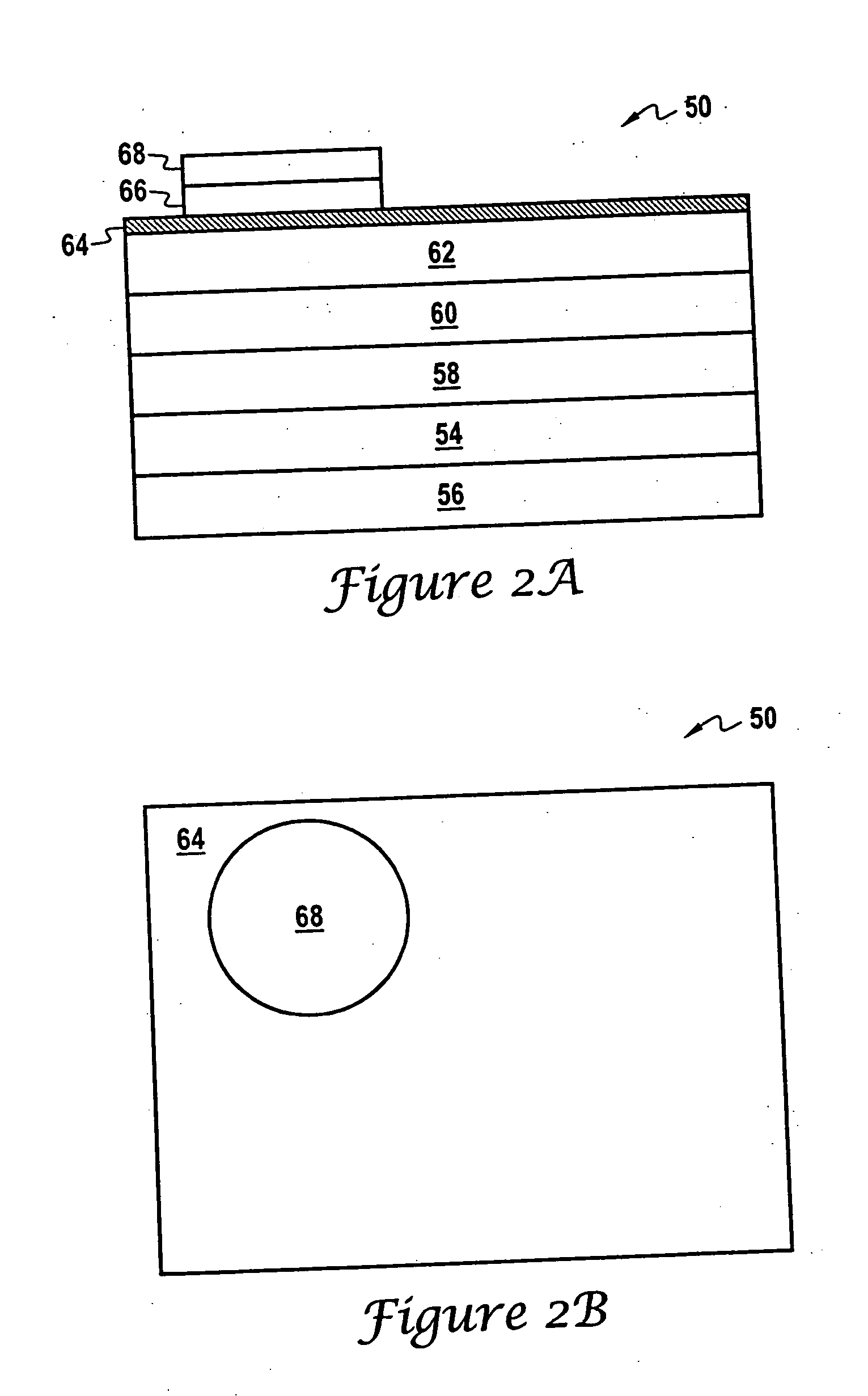Method of fabricating vertical structure LEDs
a technology of leds and vertical structures, applied in the direction of resistors, semiconductor devices, solid-state devices, etc., can solve the problems of high cost of manufacturing gan-based devices, difficult to dice sapphire substrates, and too expensive gan devices for many applications
- Summary
- Abstract
- Description
- Claims
- Application Information
AI Technical Summary
Benefits of technology
Problems solved by technology
Method used
Image
Examples
Embodiment Construction
[0030] The principles of the present invention provide for methods of fabricating semiconductor devices, such as GaN-based vertical topology LEDs, on insulating substrates, such as sapphire substrates, using metal support films. While those principles are illustrated in a detailed description of a method of fabricating vertical topology GaN-based LEDs on a sapphire substrate, those principles are broader than that illustrated method. Therefore, the principles of the present invention are to be limited only by the appended claims as understood under United. States Patent Laws.
[0031]FIGS. 3-15 illustrate a method of manufacturing vertical topology GaN-based light emitting diodes (LEDs) on sapphire substrates. Sapphire substrates are readily available in suitable sizes, are thermally, chemically, and mechanically stable, are relatively inexpensive, and support the growth of good quality GaN epitaxial layers. It should be understood that those figures are not to scale.
[0032] Referring...
PUM
 Login to View More
Login to View More Abstract
Description
Claims
Application Information
 Login to View More
Login to View More - R&D
- Intellectual Property
- Life Sciences
- Materials
- Tech Scout
- Unparalleled Data Quality
- Higher Quality Content
- 60% Fewer Hallucinations
Browse by: Latest US Patents, China's latest patents, Technical Efficacy Thesaurus, Application Domain, Technology Topic, Popular Technical Reports.
© 2025 PatSnap. All rights reserved.Legal|Privacy policy|Modern Slavery Act Transparency Statement|Sitemap|About US| Contact US: help@patsnap.com



